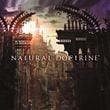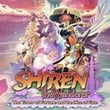Sorcery Saga: The Curse of the Great Curry God on PC and PSV is a humorous RPG with elements of roguelike. It was produced by the Japanese Compile Heart studio, known mainly for its Hyperdimension Neptune series and many other niche productions of jRPG. The title was created with PlayStation Vita in mind, but thanks to the growing popularity of Japanese titles on PCs, the British publisher, Ghostlight, prepared the title port published on Steam in 2018.
Story
W Sorcery Saga: The Curse of the Great Curry God We play the role of a young sorceress named Pupuru, who studies at the prestigious Magical Academy. In order to pass the final grade, he has to get an enchanted ball from a gloomy tower. However, he only finds a book with recipes for various types of curry on the spot. For this reason, she pains the exam and is suspended from the student's rights. After returning home, he immerses himself in the reading of the book and discovers that there is a way of preparing the legendary curry. It turns out to be a lucky coincidence, as a friend of Pupuru, who runs a local restaurant, stands one step away from bankruptcy. That's why the heroine decides to save his business and goes on an expedition in search of four rare ingredients needed to prepare a dish.
Mechanics
A ridiculous and humorous plot is the foundation on which the creators built the traditional jRPG enriched with strong elements of the roguelike. Sorcery Saga: The Curse of the Great Curry God uses a fun model based on the series Mystery Dungeon. This means that the characters move in rounds on the grid of square fields, and at each queue of our heroine, her opponents also make their move. Most of the fun is exploring the underground and fighting turn-based battles with hordes of monsters. The gameplay mechanisms can be ruthless. When Pupuru's points of life fall to zero, she loses consciousness and wakes up in the nearest city, devoid of all objects and money. There are treasure boxes in the basement, but many of them are protected by traps.
During our adventures we are accompanied by a manor named Kuu. Instead of life points, it has a hunger bar. If it drops to zero as a result of enemy attacks, we will lose control of the animal and we must return to the city. Of course, the way to avoid this is to feed it regularly. While playing, we collect ingredients that are used to cook different types of curry. Individual recipes allow us to prepare dishes that provide specific bonuses for skills and statistics.
Technical issues
Sorcery Saga: The Curse of the Great Curry God has a colorful and graceful graphic style. Most of the dialogues with characters that have been produced in the form known from visual novel are fully duplicated by Japanese actors. The undergrounds were presented from isometric projection in full three-dimensional. However, models of characters and creatures are simplified compared to their two-dimensional portraits.
Please let us know if you have any comments or suggestions regarding this description

![[1:13] trailer](https://cdn.gracza.pl/galeria/filmy/640x360/600606657.jpg)






